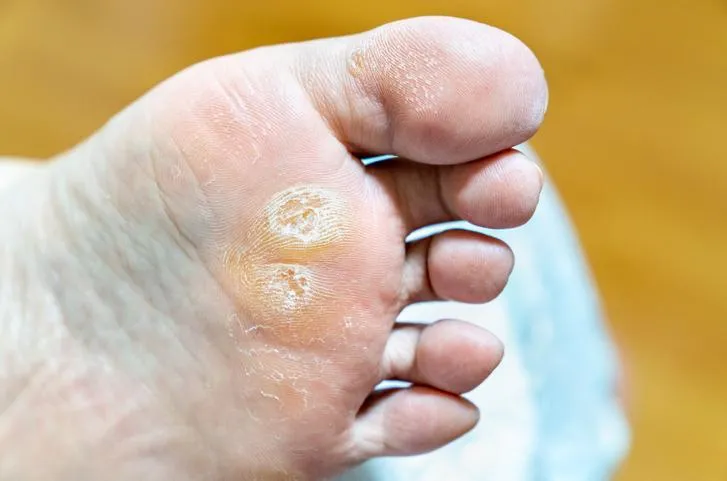
Callouses Be Gone: Tips for Prevention and Smooth Skin
What Are Callouses?
A callous forms as the body's response to repeated pressure or friction. The skin thickens in the affected area to protect the underlying tissues from further damage. Over time, the outermost layer of skin becomes more robust, resulting in a rough and hardened surface.
Where Callouses Form:
Feet: The soles, heels, and toes, especially when wearing poorly fitting shoes or engaging in activities that put pressure on the feet.
Hands: The palms and fingers, often due to manual labor, weightlifting, or frequent use of tools.
Elbows and Knees: These areas may develop callouses due to repeated pressure or friction from physical activities.
Causes of Callouses
The primary cause of callouses is friction or pressure that causes the skin to thicken. Common causes include:
Ill-fitting Footwear: Shoes that are too tight, too loose, or lack proper support can cause friction. High heels or shoes with narrow toe boxes are often the culprits.
Repetitive Activity: Activities like running, hiking, or manual labor that put constant pressure on certain body parts.
Physical Labor: Those who work with their hands (construction workers, gardeners, musicians) often develop callouses due to repetitive tool use.
Inadequate Hand Protection: Not wearing gloves when gripping objects can lead to callouses on the hands.
How to Prevent Callouses
Preventing callouses involves reducing friction, pressure, and irritation on the skin. Here are some effective tips:
Wear Proper Footwear: Choose shoes that fit well, provide arch support, and offer cushioning. Ill-fitting shoes are the main cause of callouses on the feet. Ensure shoes aren’t too tight or too loose to avoid rubbing and pressure.
Moisturize Regularly: Dry skin is more likely to become thick and rough. Consistently apply a moisturizer to maintain skin elasticity and prevent callouses. Use a thick foot or hand cream containing nourishing ingredients like shea butter or glycerin.
Use Protective Gear: Wear gloves for activities causing friction, like weightlifting or gardening. Use cushioned insoles or pads in shoes to protect feet from pressure.
Avoid Repetitive Stress: Reduce activities that apply constant pressure or friction to the same skin areas. Take breaks to allow skin to recover.
How to Manage Callouses
While callouses are typically harmless, they can become uncomfortable or unsightly if not addressed. Here are some strategies for managing them:
Soak and Exfoliate: Soak your feet or hands in warm, soapy water for 10-15 minutes to soften the skin. Use a pumice stone or foot file to gently exfoliate the thickened area. Avoid sharp objects or over-exfoliating to prevent injury.
Use Over-the-Counter Products: Creams and ointments with salicylic acid can help break down and soften thick skin. Urea-based products are also effective. Follow the instructions carefully to avoid irritation.
Moisturize After Treatment: After exfoliating, apply a rich moisturizer to keep the skin soft and prevent future callous formation. Look for creams with urea to soften hard skin.
Wear Padding: For callouses on the feet, use soft pads or cushions in your shoes to reduce pressure and prevent worsening. This also alleviates discomfort from existing callouses.
Consult a Professional: If a callous becomes painful, inflamed, or infected, seek medical advice. A podiatrist or dermatologist can provide professional treatments like debridement or prescription-strength medications.
Now You Know
Callouses are a common skin issue that forms due to friction and pressure. While they serve as a protective mechanism, they can become problematic if not managed properly. By wearing well-fitting shoes, moisturizing regularly, and using protective gear, you can prevent callouses from forming. If they do occur, gentle exfoliation, moisturizing, and padding can keep them under control. If they become painful or troublesome, consult a healthcare professional. With proper care, you can maintain smooth, healthy skin free from the discomfort of callouses.
#Seniors #cantreachmyfeet #diabetics #footcarenurse #footcaresevices #fitfeet
